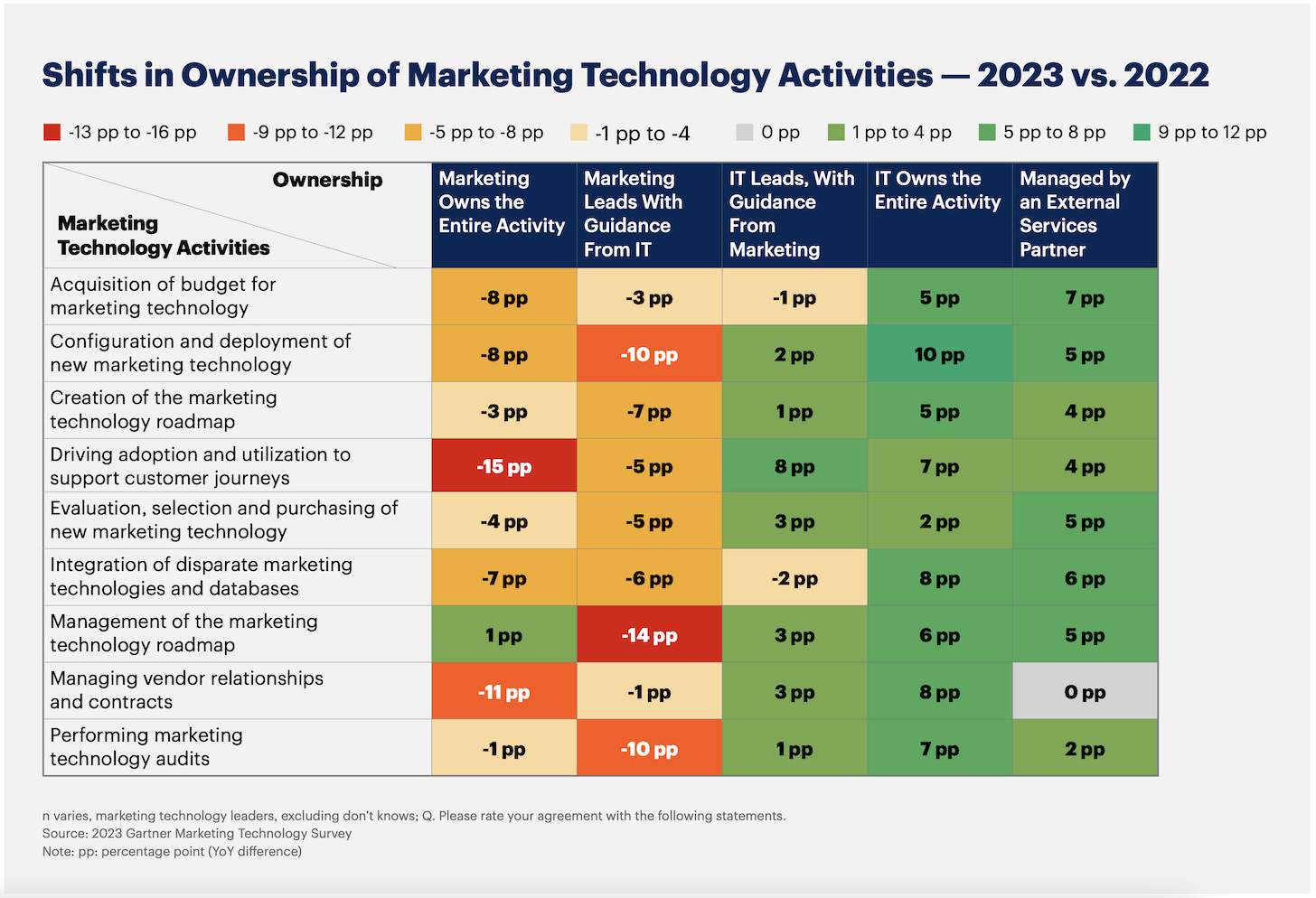
Was it John Lennon who wrote, “Imagine there’s no martech, I wonder if you can?”
I may be misremembering that lyric. But it’s what came to mind when I saw the above chart. It’s from a new Gartner report, 4 Actions to Improve Martech ROI, and it reveals a pretty dramatic shift in ownership of martech responsibilities from marketing to IT.
“Configuration and deployment of new marketing technology” saw a 10-point shift from Marketing Leads With Guidance From IT to IT Owns the Entire Activity.
Similar but less dramatic shifts are shown for acquisition of martech budget, creation of the martech roadmap, evaluation and purchasing of martech, and — perhaps most naturally — integration of disparate marketing technologies and databases.
Particularly surprising was a 15-point drop from marketing entirely owning “Driving adoption and utilization to support customer journeys.” Although the key words there are probably adoption and utilization — effectively tech enablement — more so than their context in customer journeys.
There was also a remarkable uptick in these responsibilities being managed by external services partners. But let’s set that aside for now. There’s something else happening there. In the context of the evolving marketing/IT split, the question you’d want answered is: are those external services providers reporting to the CIO or the CMO?
If I take a swag at illustrating this shift of martech ownership from marketing to IT, it might look something like this:
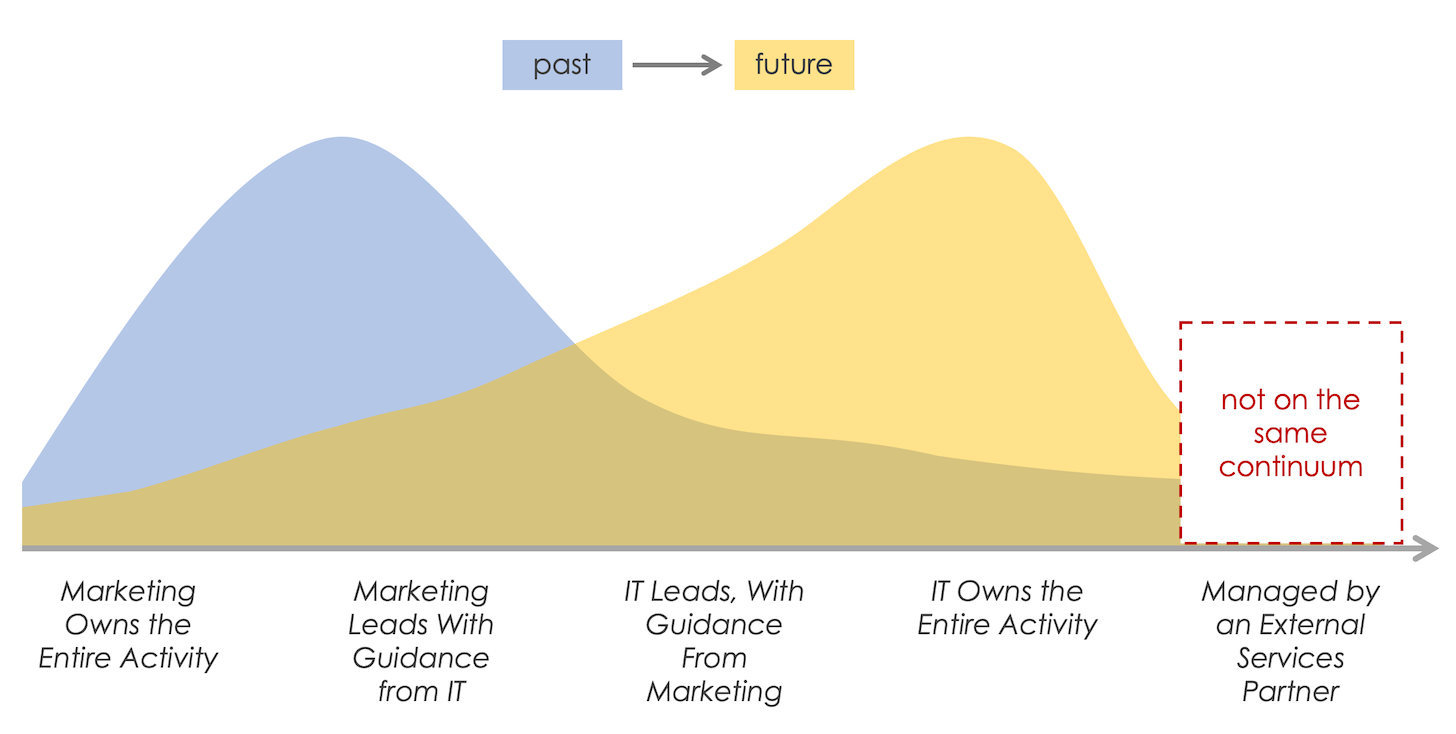
This raises a ton of questions. Is this shift real? If so, what’s driving it? And what does it mean for the future of marketing technologists and marketing operations professionals?
I do believe this is real. Given Gartner’s clientele of primarily large enterprises, it’s probably more prevalent in organizations at that scale than in smaller businesses or the mid-market right now. But it will spread.
I’ve seen this shift anecdotally at a few individual companies over the past year. But the real reason it rings true to me is that it makes logical sense in the context of how martech is evolving. And it’s actually a really good thing for marketing.
Here’s what’s driving this…
The Age of Aggregation in Tech Stacks
Simple consolidation, as one’s dominant technology management strategy, has fallen short. The diversity of apps in companies’ tech stacks has remained large because there are real business needs for specialized capabilities. And as new innovations arise in the market — along with corresponding changes in customer expectations — companies face real competitive pressure to adopt and leverage them as additive capabilities.
That’s not to say that consolidation isn’t good. By all means, consolidate as much as possible. But consolidation alone doesn’t solve all our tech stack challenges. We are still going to have many apps. But we need them to work together.
The more powerful — and adaptable — pattern that has emerged for this is aggregation.
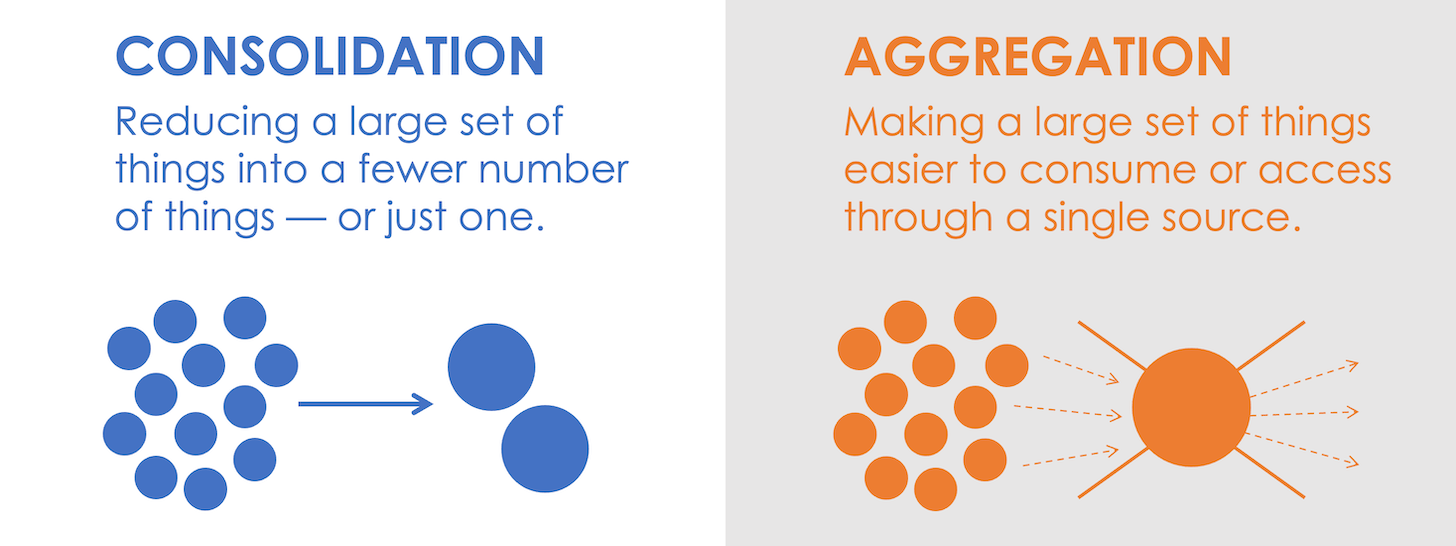
Consolidation in about reducing a large set of things to a fewer number of things — or just one. Aggregation is about making a large set of things easier to consume or access through a single source.
Aggregation Theory in tech was conceived by Ben Thompson of Stratechery. He’s applied it mostly to Internet services such as social media, where an aggregator such as YouTube or TikTok aggregates millions of creators, making discovery and consumption easier for hundreds of millions of users.
Ironically, the best aggregators end up consolidated in their domain. An aggregator is most effective when there are only one or a few of them in a particular space.
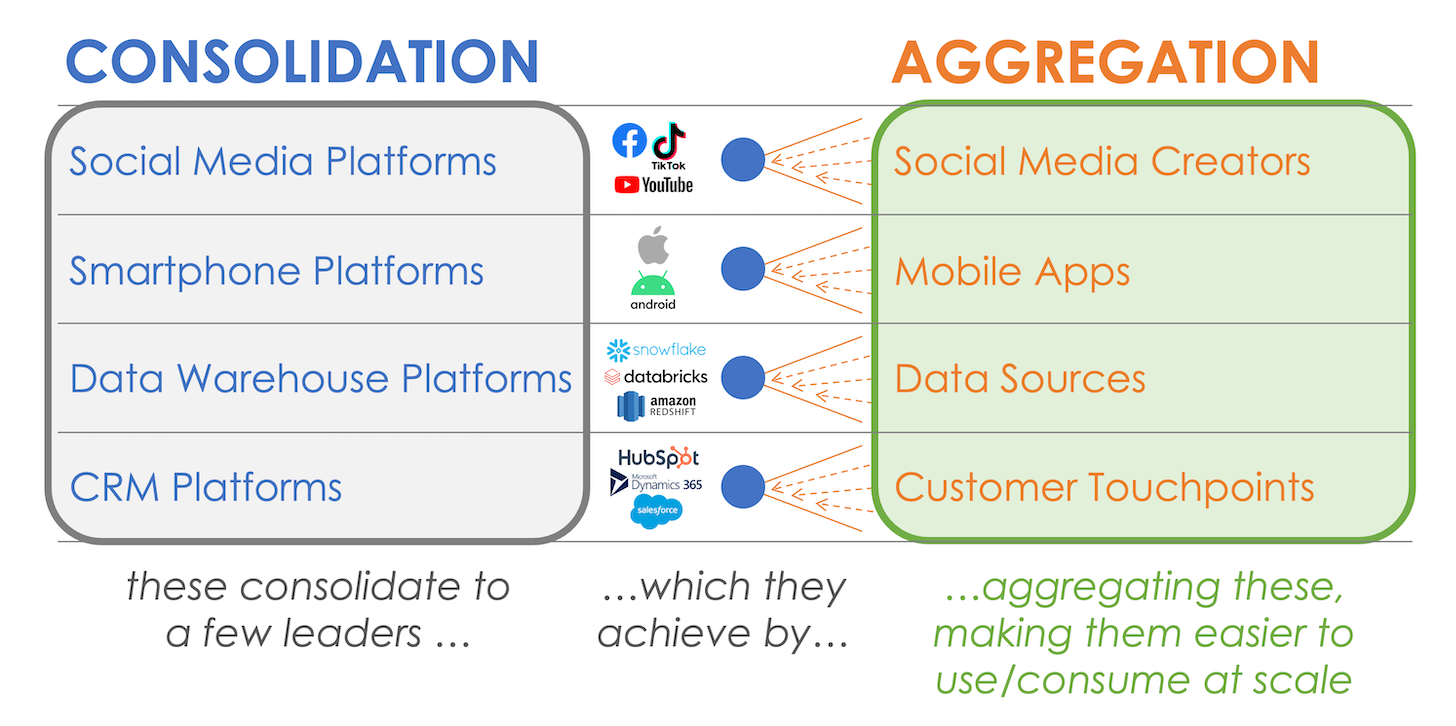
It occurred to me a couple of years ago that this same dynamic was happening inside companies’ tech stacks. Cloud data warehouses, such as Snowflake and Databricks, aggregate data from many sources, making it easier for others across the organization to reach and use it. CRM platforms, such as HubSpot and Salesforce, aggregate an ever wider range of customer touchpoints — again, making it easier for such data and activities to be orchestrated from a single platform.
With aggregation, you can productively harness a wide diversity of apps in your tech stack, as long as they integrate with your chosen aggregation platforms. (You must consolidate to a small number of aggregation platforms to make this effective.)
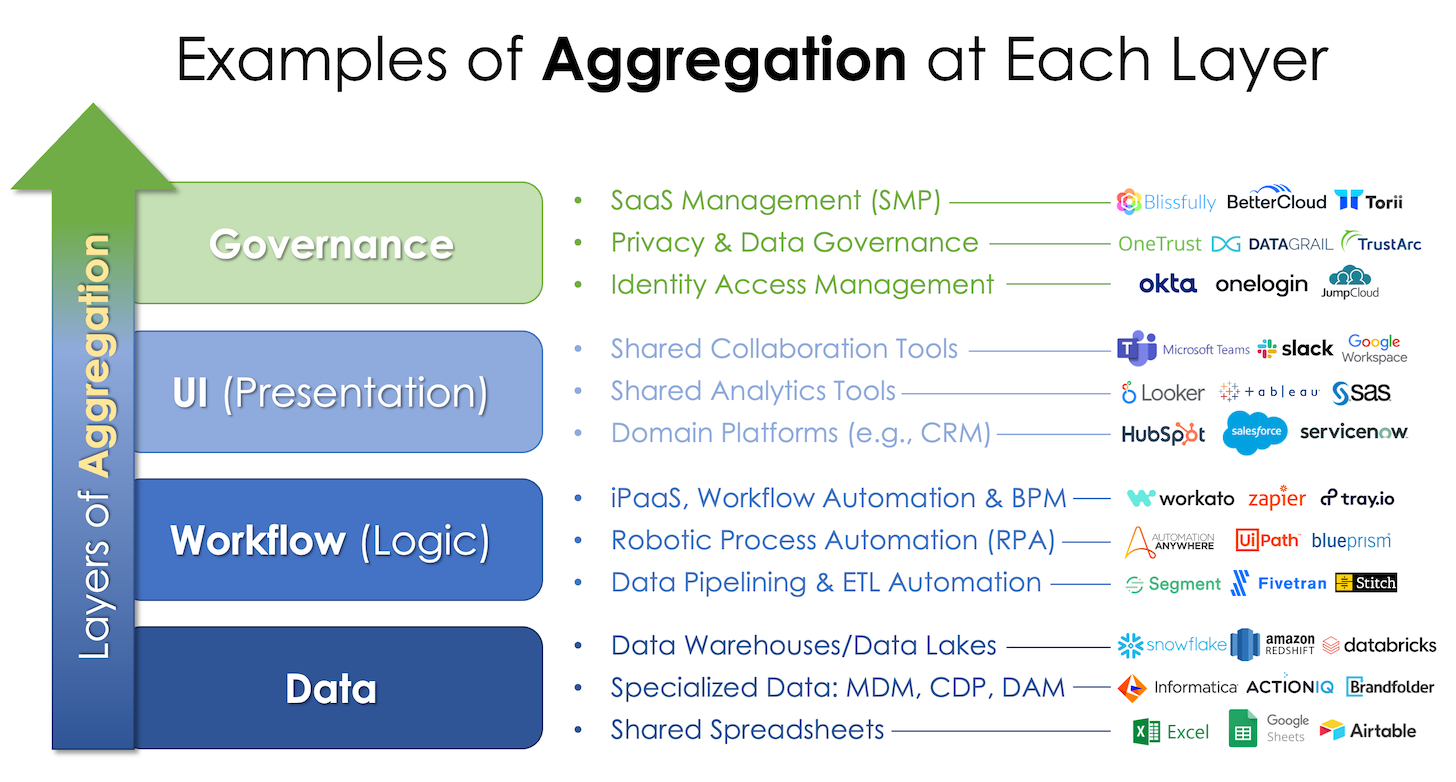
Aggregation can happen at different layers within your tech stack: data, workflow, UI, and governance. I’ve shown a number of examples in the above graphic.
The important thing to note is that these are horizontal aggregation platforms. Most of them span departments across your organization. There are also vertical aggregation platforms — which aggregate data, workflows, UI, etc., within a particular business function. But for today’s discussion, let’s just focus on the horizontal layers.
Because these horizontal aggregation platforms span multiple departments, it makes sense that they should be owned and operated by a department designed to manage technology on behalf of everyone else. This is what IT was born to do.
Who should manage the cloud data warehouse infrastructure? IT. Who should manage your workflow automation platform? IT. Who should manage your shared analytics tools? IT. (Or, if company-wide data management or analytics lives outside of IT, it’s possible that department might be the better owner of some of these.)
The important point is: it’s probably not the marketing department.
These are not exclusively martech tools. Non-marketing teams use them too. But, they are certainly technology used by marketing. So we can call them inclusively martech tools.
What does this mean for marketing operations?
I believe this shift will be a massive windfall for marketing operations for two reasons.
First, this is a classic opportunity to give away your Legos. Spending less time managing technology infrastructure will free up more time for marketing operations to build better processes, experiences, and enablement for employees and customers. I know of no marketing ops teams that have an empty backlog, at risk of running out of valuable things to do at any time in this decade.
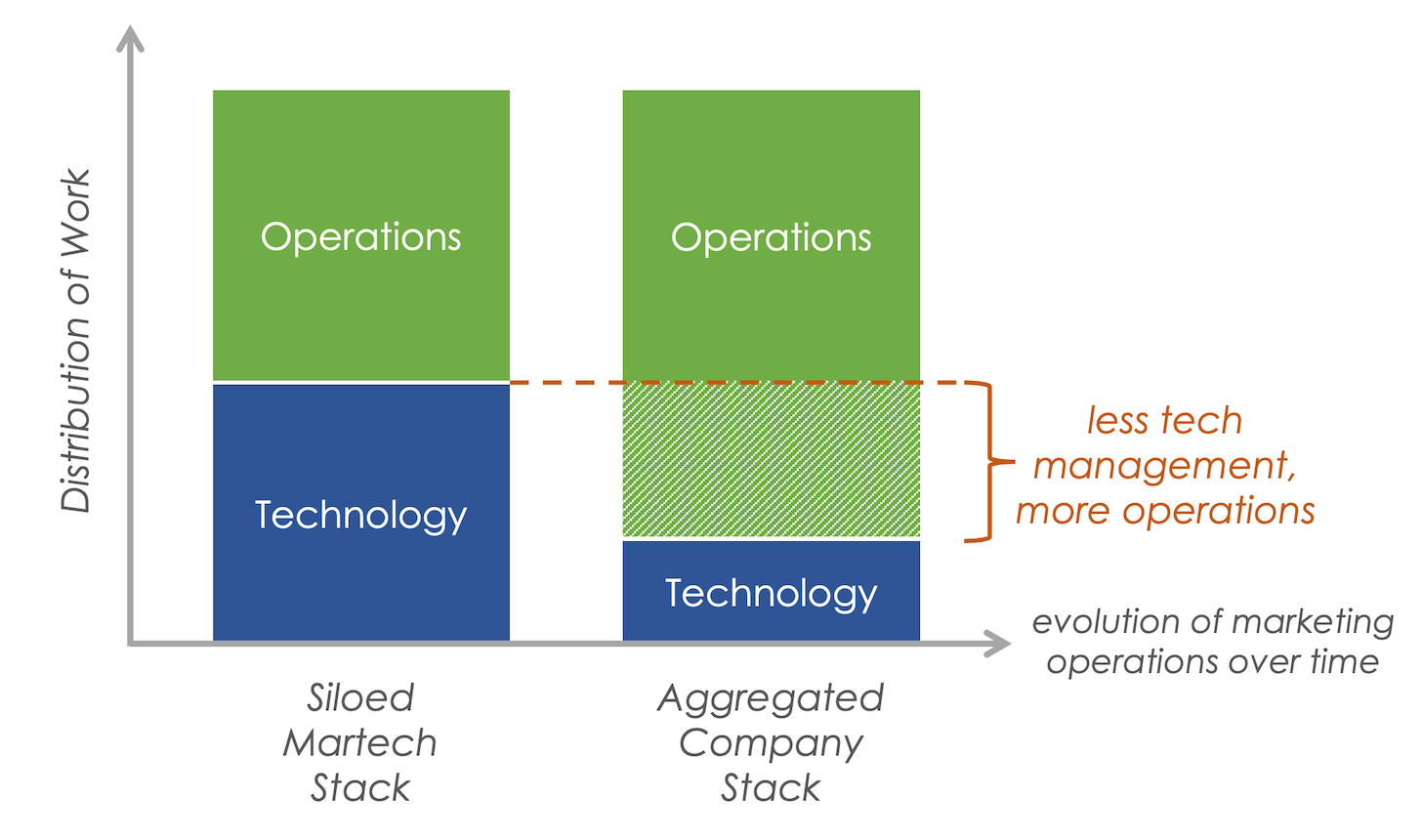
Second, these aggregation platforms open up a tremendous amount of new data and new cross-organizational services that marketing can tap into. And it’s accompanied by greater technical expertise from dedicated IT and data teams running that infrastructure. This offers a huge opportunity to innovate on top of a much greater foundation.
To be sure, there will still be domain-specific platforms and apps that marketing operations will steward. But asymptotically, all of them will be connected to one or more aggregation platforms. This will increase IT’s governance over such integrations. But the additional operations power this will unleash for marketing will make that a sweet deal overall.
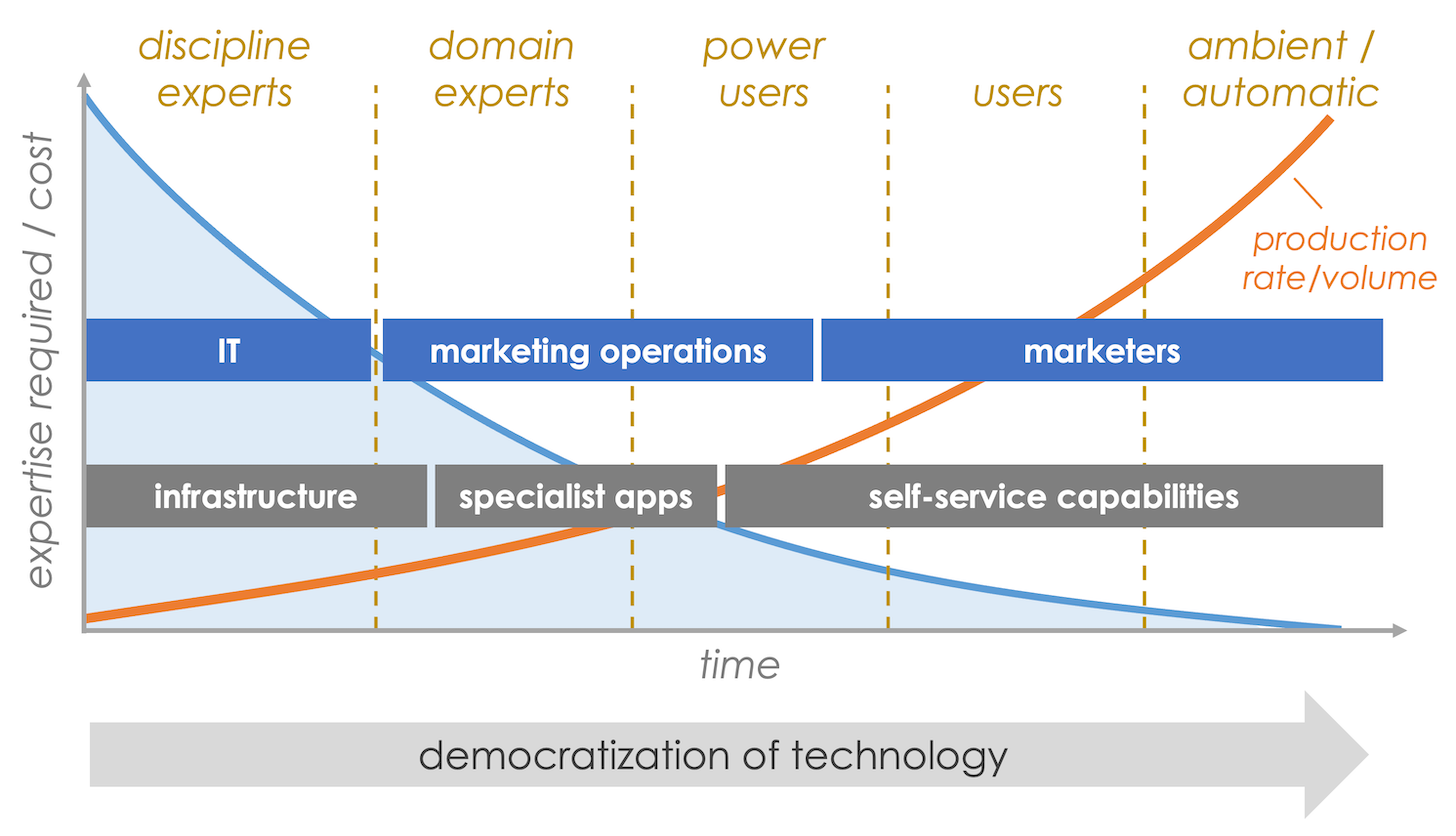
It’s worth emphasizing that in this future I believe more and more of the work marketing operations will do is composing automations, agents, analytics, and employee-facing and customer-facing custom “apps” built on the foundations of aggregation platforms.
Increasingly in this aggregated environment, marketing ops will have the opportunity to expel the frustrations of Inverse Conway’s Law from their stack and shape the way that marketing operates with far greater agency.
Let’s celebrate this shift of inclusive martech into IT. It heralds an exciting road ahead.



